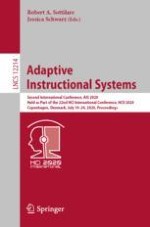2020 | Buch
Adaptive Instructional Systems
Second International Conference, AIS 2020, Held as Part of the 22nd HCI International Conference, HCII 2020, Copenhagen, Denmark, July 19–24, 2020, Proceedings
herausgegeben von: Robert A. Sottilare, Jessica Schwarz
Verlag: Springer International Publishing
Buchreihe : Lecture Notes in Computer Science
